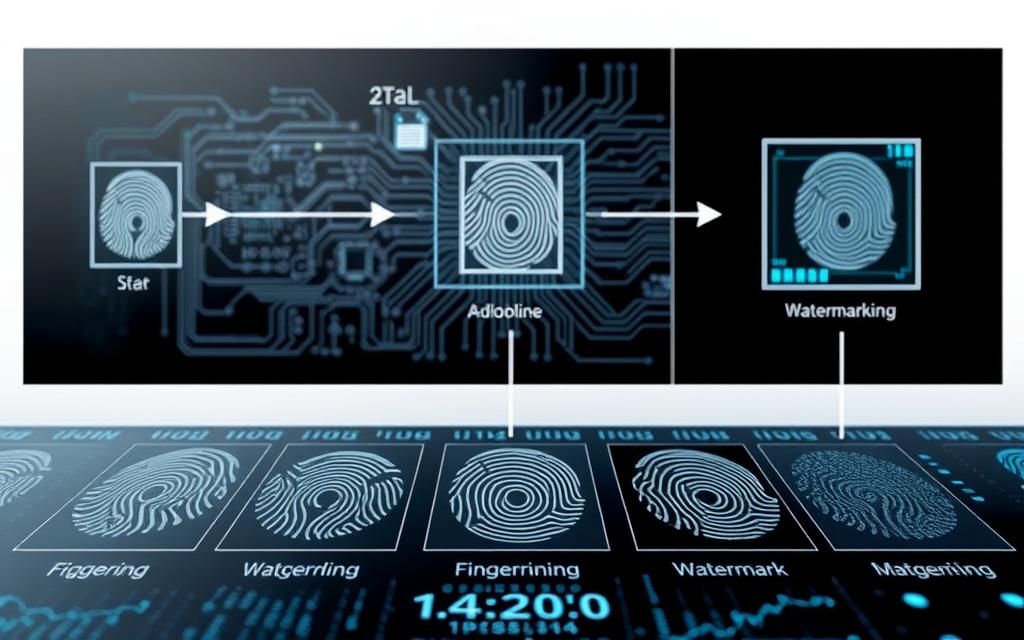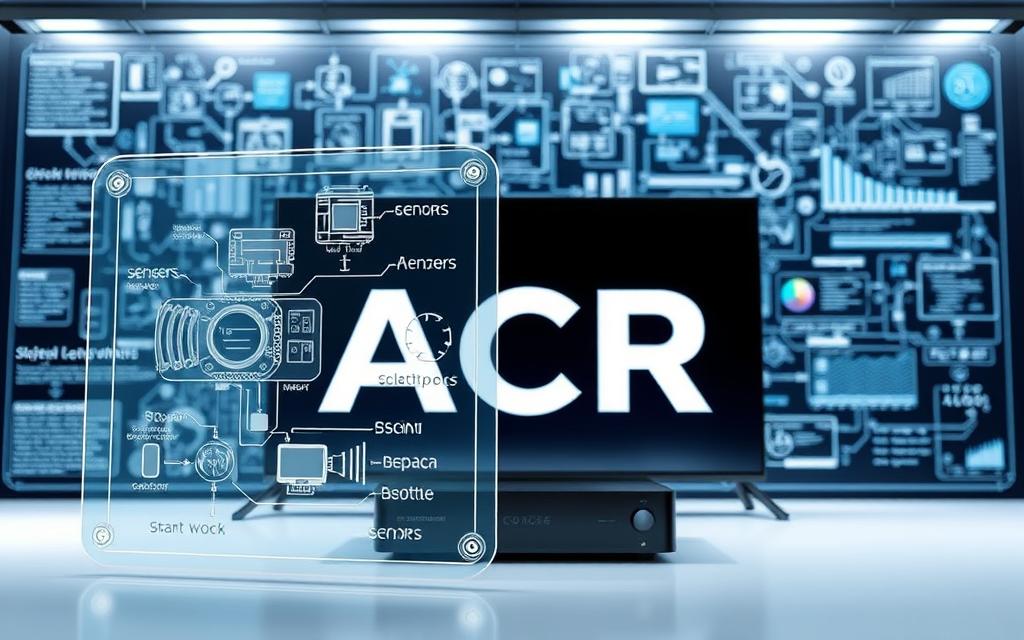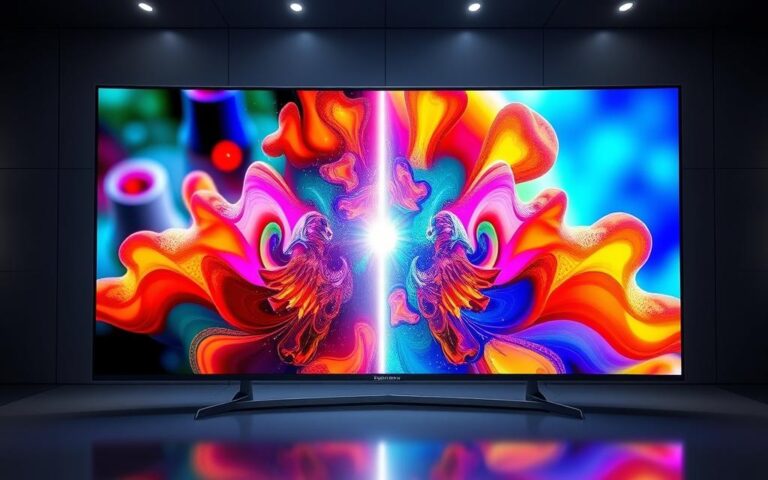Decoding ACR Technology: What It Is and How It Works
Modern TV analytics rely heavily on ACR, a system that tracks content across various devices. This method captures audio and visual signals to identify what viewers are watching. With the rise of smart TVs, this approach has become essential for understanding viewership trends.
Smart TV watch time surged by 64% year-over-year in Q3 2021, according to Conviva. By 2026, over half of global households are expected to own these devices. This growth highlights the need for accurate data collection and analysis.
Vizio leads the market with over 18 million ACR-enabled TVs. This system works across devices like set-top boxes, Blu-ray players, and streaming platforms. However, privacy concerns remain, as seen in Vizio’s $17 million FTC settlement over opt-in requirements.
What Is ACR Technology? The Core Explained
Automatic content recognition revolutionizes how media is tracked and analyzed. This system identifies content by matching audio or visual patterns to reference libraries. It’s a cornerstone of modern media analytics, offering insights into viewer habits and preferences.
Defining Automatic Content Recognition
Automatic content recognition (ACR) is a pattern-matching technology that identifies media through audio or video fingerprints. It works by comparing snippets of content to a pre-cataloged database. This process enables precise tracking of what viewers are watching across various devices.
Audio-Based vs. Visual-Based ACR: How They Differ
There are two primary methods of ACR: audio-based and visual-based. Audio ACR matches sound snippets, like jingles or dialogue, to reference libraries. Visual ACR, on the other hand, uses frame fingerprinting to identify content. For example, Shazam expanded its audio recognition capabilities to TV in 2011, showcasing the versatility of this approach.
| Method | Process | Example |
|---|---|---|
| Audio-Based ACR | Matches sound snippets to reference libraries | Shazam’s TV recognition |
| Visual-Based ACR | Uses frame fingerprinting for identification | LG’s partnership with Cognitive Networks |
The Role of Smart TVs in ACR Adoption
Smart TVs are the primary collectors of ACR data due to their embedded sensors and operating system integration. Brands like LG, Samsung, Roku, and Vizio dominate this space. For instance, LG partnered with Cognitive Networks in 2013 to pioneer interactive ACR applications. Today, 90% of Vizio users opt into ACR tracking during setup, highlighting its widespread adoption.
How ACR Technology Works in Practice
Fingerprinting and watermarking are key to understanding modern viewership trends. These methods enable precise identification of content across devices, providing valuable insights for advertisers and media analysts.

Fingerprinting and Watermarking: The Matching Process
Fingerprinting analyzes unique attributes of content, such as audio or visual patterns. For example, Shazam uses audio IDs to match songs. Watermarking, on the other hand, embeds undetectable codes into media files. These codes are pre-inserted and remain consistent across platforms.
Samba TV’s video ACR is a prime example of fingerprinting in action. It identifies content across 90+ countries, enabling cross-device retargeting for campaigns. This approach ensures accurate measurement of ad exposures and viewer engagement.
| Method | Process | Example |
|---|---|---|
| Fingerprinting | Analyzes unique content attributes | Shazam’s audio recognition |
| Watermarking | Embeds undetectable codes | Samba TV’s video ACR |
From Data Capture to Household-Level Insights
Raw signals collected through ACR are converted into detailed household-level insights. For instance, viewers of a specific show can be linked to their IP or email addresses. This allows for precise audience profiling, including demographics and income levels.
ACR also plays a crucial role in ad exposure verification. It tracks whether a TV is powered on, ensuring ads are viewable. Platforms like Vizio’s Inscape and Samsung’s SmartTV sync viewing habits with third-party platforms for comprehensive data aggregation.
For example, NBCUniversal uses ACR to validate ad exposures beyond traditional Nielsen panels. This ensures advertisers receive accurate measurement of their campaigns. Learn more about these applications in this introductory guide.
ACR’s Real-World Applications and Privacy Implications
The integration of ACR systems has transformed how advertisers and media companies understand viewer behavior. From precise audience measurement to personalized ad delivery, this tech offers unparalleled insights. However, it also raises significant privacy concerns that cannot be ignored.
Audience Measurement and Ad Targeting
ACR excels in capturing detailed viewing habits, enabling advertisers to target specific audiences. For example, Toyota retargets Corolla ads to viewers of automotive shows. This precision ensures campaigns reach the right people at the right time.
Vizio’s revenue model highlights the value of this data. In Q3 2021, the company earned $42.8 million from data sales, surpassing its hardware revenue of $35.6 million. This shift underscores the growing importance of ACR in advertising strategies.
Content Recommendations and Cross-Device Retargeting
ACR enhances user engagement by suggesting similar shows or music based on viewing history. It also enables cross-device retargeting, tying TV viewing data to mobile IDs for omnichannel campaigns.
Samba TV’s platform exemplifies this capability. After TV exposure, 65% of users see follow-up mobile ads. This seamless integration ensures consistent messaging across devices, boosting campaign effectiveness.
| Application | Benefit | Example |
|---|---|---|
| Audience Measurement | Precise viewer insights | Toyota’s automotive show retargeting |
| Cross-Device Retargeting | Omnichannel campaign consistency | Samba TV’s mobile ad follow-ups |
Consumer Consent and the Opt-In Debate
Privacy remains a critical issue in ACR adoption. The FTC’s 2016 fine against Vizio led to explicit opt-in requirements, resulting in a 90% consent rate post-settlement. However, complex opt-out processes continue to raise concerns.
IP addresses, classified as non-PII, enable indirect household profiling. This loophole highlights the need for stricter regulations to protect viewer privacy. As Havas Media leverages ACR to target comedy fans with relevant streaming premieres, balancing personalization with privacy becomes essential.
“The challenge lies in delivering personalized experiences while respecting consumer privacy.”
For a deeper dive into how ACR enhances advertising and content strategies, explore this introductory guide.
Conclusion: The Future of ACR in a Data-Driven World
The evolution of media analytics is reshaping how audiences engage with content. As data-driven strategies dominate the industry, ACR emerges as a cornerstone for precise measurement and targeted advertising. Platforms like VideoAmp and iSpot are integrating this technology into alternative currencies, challenging traditional models like Nielsen.
However, challenges persist. Walled gardens from brands like Samsung and Vizio limit cross-platform deduplication, fragmenting datasets. Clean room solutions, such as NBCUniversal’s, aim to unify these fragmented insights, offering a more cohesive view of viewership trends.
By 2025, 78% of marketers plan to increase budgets for ACR-driven campaigns, highlighting its growing importance. Yet, potential regulatory shifts, like reclassifying IP addresses as PII, could disrupt targeting strategies. Despite these hurdles, GroupM emphasizes that ACR remains irreplaceable for impression-based TV planning.
In a data-driven future, ACR will continue to redefine how advertising and content strategies are crafted, ensuring relevance and precision in a rapidly evolving media landscape.
FAQ
How does automatic content recognition function in smart TVs?
Smart TVs use ACR to analyze audio or visual signals from content being played. This data is matched against a database to identify the program, enabling features like audience measurement and personalized ads.
What’s the difference between audio-based and visual-based ACR?
Audio-based ACR captures sound waves to identify content, while visual-based ACR analyzes images or video frames. Both methods aim to recognize media but use distinct approaches for data extraction.
How does ACR technology benefit advertisers?
Advertisers leverage ACR to gain insights into viewer habits, enabling precise ad targeting and campaign optimization. This leads to higher engagement and better ROI for marketing efforts.
What are the privacy concerns surrounding ACR?
ACR collects data from devices, raising concerns about user consent and data security. Many platforms now require opt-in mechanisms to address these privacy issues.
Can ACR technology track content across multiple devices?
Yes, ACR can monitor content consumption across devices like smart TVs, tablets, and smartphones, providing a comprehensive view of user behavior for cross-device retargeting.
How does ACR contribute to audience measurement?
By tracking what viewers watch and when, ACR provides detailed metrics on viewership. This data helps media companies and advertisers understand audience preferences and trends.
What role does fingerprinting play in ACR systems?
Fingerprinting creates unique identifiers for content, allowing ACR systems to match media accurately. This process ensures precise recognition and data collection.
Are there industry standards for ACR implementation?
While practices vary, many companies follow guidelines to ensure transparency and user consent. Standards are evolving as the industry addresses privacy and ethical concerns.














